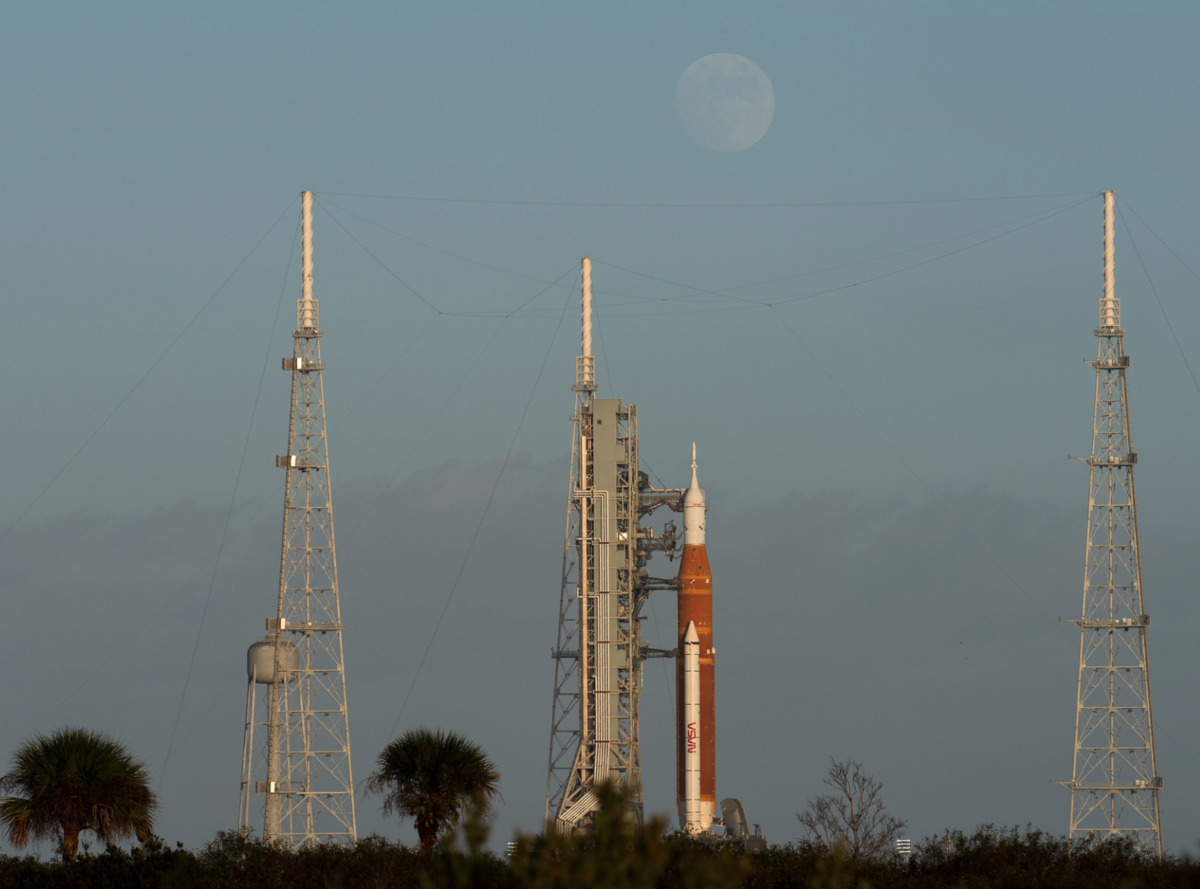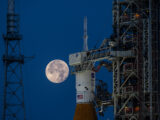By Glynn Wilson –
WASHINGTON, D.C. — All things being stable, the United States of America will launch a rocket to the moon this Wednesday for the first time since the Apollo 17 mission in 1972, 50 years ago.
While many critics say the billions of dollars being spent on this Artemis moon mission that appears to be more political than scientific would be better spent working on plans to protect planet Earth from the inevitable ravages of climate change from global warming due to people burning fossil fuels for energy and transportation.
But considering the rapidly approaching timeline for the day when much of this planet may become uninhabitable due to the impacts of climate change, this mission may be a necessary first step to prepare for the day when space travel could be the only alternative for the survival of the human beings of Earth.
This will be a test mission that will lead to other missions when NASA astronauts will go back to the moon, including the first woman and the first person of color, with the goal to establish a long-term lunar presence and prepare for a manned mission to Mars.
The New York Times held a round table discussion with scientists and published the extraordinarily candid conversations here:
NASA Is Returning to the Moon This Week. Why Do We Feel Conflicted?
The launch countdown will begin at 1:24 a.m. on Monday, Nov. 14, and culminate in a launch sometime on Wednesday to be announced, according to the press release.
Live coverage of briefings and events will air on NASA Television, the NASA app, and the agency’s website.
Engineers previously rolled the rocket back to the Vehicle Assembly Building on Sept. 26 ahead of Hurricane Ian, and after waving off two previous launch attempts Aug. 29 due to a faulty temperature sensor, and Sept. 4 due to a liquid hydrogen leak at an interface between the rocket and mobile launcher.
Wednesday, Nov. 16
4 a.m.: NASA TV coverage of the postlaunch news conference will follow approximately one hour after the live launch broadcast ends. Coverage start time is subject to change, based on the exact liftoff time. The postlaunch news conference will include the following participants:
Bill Nelson, NASA administrator
Mike Sarafin, Artemis mission manager, NASA Headquarters
Mike Bolger, Exploration Ground Systems Program manager, Kennedy
John Honeycutt, Space Launch System Program manager, Marshall
Howard Hu, Orion Program manager, NASA’s Johnson Space Center
Emily Nelson, chief flight director, Johnson
8:30 a.m.: NASA TV commentary coverage of Orion’s first outbound trajectory burn on the way to the Moon. Coverage start time is subject to change, based on the exact liftoff time.
10 a.m.: NASA TV commentary coverage of first Earth views from Orion during outbound coast to the Moon.
Live NASA TV coverage leading to launch will begin with commentary of tanking operations at 3:30 p.m. Tuesday, Nov. 15, followed by launch coverage beginning at 10:30 p.m. Launch coverage will stream on the NASA website, as well as Facebook, Twitch, NASA YouTube, and in 4k on NASA’s UHD channel.
For NASA TV downlink information, schedules, and links to streaming video, visit:
Attend Launch Virtually
Members of the public can register to attend the launch virtually. NASA’s virtual guest program for the mission includes curated launch resources, notifications about related opportunities or changes, and a stamp for the NASA virtual guest passport following a successful launch.
Engage on Social Media
Stay connected with the mission and let people know you are following the launch on Twitter, Facebook, and Instagram with #Artemis. Follow and tag these accounts:
Twitter: @NASA, @NASAArtemis
Facebook: NASA, NASAArtemis
Instagram: NASA, NASAArtemis
The public can track the Artemis I mission as it happens using to Artemis Real-time Orbit Website, which will provide information about where Orion is in relation to the Earth and the Moon. Individuals also can also download a virtual boarding pass to commemorate the historic flight.
Through Artemis missions, NASA will land the first woman and the first person of color on the Moon, paving the way for a long-term lunar exploration and serving as a steppingstone to send astronauts to Mars.
For more information about the Artemis I mission, visit the website here.














